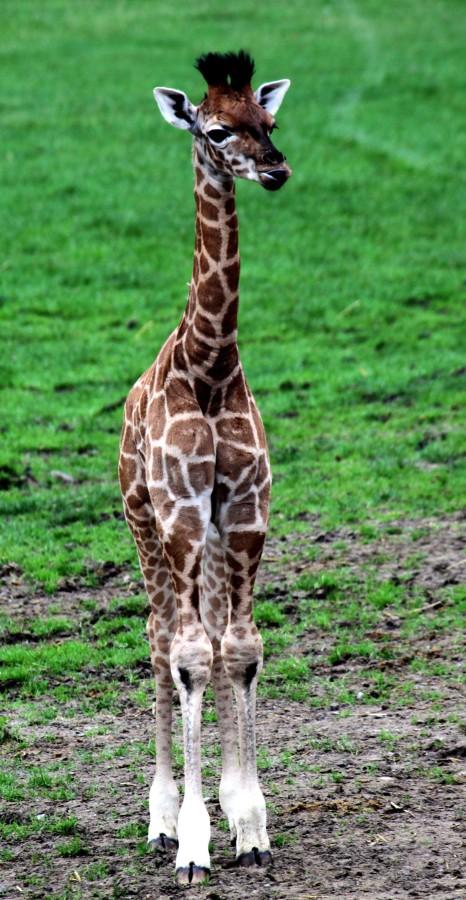(MCT)
By Jennifer O’Connor
People for the Ethical Treatment of Animals
People around the world were justifiably outraged when a healthy young giraffe was killed because he didn’t fit into a Danish zoo’s breeding plan. A second giraffe execution was in the works before public condemnation put a stop to it. But the only real surprise is how forthcoming these zoos were about it, since disposing of unwanted animals is typically the industry’s dirty little secret. Zoos everywhere, including right here in North America, routinely find ways to unload animals they no longer want or need.
Baby animals bring visitors through the gates. But little ones quickly outgrow their ticket-selling appeal. There’s never enough space for all the adult animals. Many of them are simply warehoused in off-exhibit buildings designed solely to cage and house animals with no place to go. Stored like used car parts, all they can do is wait for relief that never comes. Others are traded or sold to other zoos or roadside menageries.
The vast majority of animals who are bred in zoos are not endangered, and most of the ones who are in trouble aren’t going to be released into their natural homelands in order to bolster wild populations. For every elephant born in a zoo, two more die, yet zoos continue to subject elephants to painful and frightening artificial insemination, just to churn out more cash cows. Chai, an elephant at the Woodland Park Zoo in Seattle, has been subjected to the procedure 112 times, with only one successful birth — a calf who later died. According to investigative reporter Michael J. Berens, the overall infant-mortality rate for elephants in zoos is an appalling 40 percent — nearly triple the rate of elephants in the wild. In a 25-year period at the Houston Zoo, 14 out of 14 elephant calves died — a 100 percent failure rate.
Even though the U.S. is overrun with tigers in backyard menageries, sleazy roadside zoos and sham sanctuaries, zoos still allow tigers to breed, because cubs are marketing goldmines. No tiger born in a zoo will ever set foot in an Asian jungle or help wild populations rebound. They will help a zoo’s bottom line.
Gorilla families are led by one dominant male, but so many male gorillas are born in captivity that zoos are being forced to find ways to create all-male “bachelor” groups. But as these juvenile males mature into adulthood, conflicts naturally arise. Caged gorillas have no way to escape an aggressive cagemate.
And let’s not forget the zoo community’s most lucrative marketing coup: the panda. In China’s breeding centers, cubs are typically taken from their mothers before they reach 6 months of age to force females to go into estrus again. Female pandas are fertile only for a day or two, so when a female shows signs of going into heat, she’s poked and prodded and her vagina is swabbed to determine whether she is ovulating. Males are electroejaculated (a probe is inserted into his rectum to produce electrical stimulations that cause ejaculation) and the semen, often from more than one male, is then inserted into the female with a laparoscope.
Like all bears, panda moms are protective and nurturing. But the conditions of China’s loan program require that cubs be returned “home” within two years of birth. Treated as commodities, the young pandas and their mothers will likely never see each other again.
Zoos are businesses whose “merchandise” is living, feeling animals. As long as society considers it acceptable to keep animals in captivity so that humans can while away a couple of hours gawking at them, this merciless and mercenary cycle will continue.
———
ABOUT THE WRITER
Jennifer O’Connor is a senior writer with the PETA Foundation, 501 Front Street, Norfolk, Va. 23510; www.PETA.org. Information about PETA’s funding may be found atwww.peta.org/about/numbers.asp.
This essay is available to McClatchy-Tribune News Service subscribers. McClatchy-Tribune did not subsidize the writing of this column; the opinions are those of the writer and do not necessarily represent the views of McClatchy-Tribune or its editors.
© 2014, People for the Ethical Treatment of Animals
Distributed by MCT Information Services



